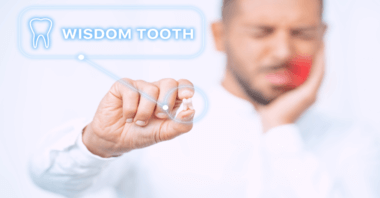

Are you advised for wisdom tooth removal? Worried about the procedure? We have you covered! The four wisdom teeth or the molars, located at the far end of the jaw are the last molars. These teeth generally appear between the ages of 17 - 25. Did you know - some people never develop wisdom teeth? Wisdom teeth are not always problematic, for some, these molars erupt normally — just as their other molars did and cause no problems. When they erupt without any problems, healthy wisdom teeth can be a valuable asset to your mouth. But most of the time, the wisdom tooth appears to be either crooked or impacted or one lying perpendicular to the teeth roots. Sometimes, even if erupted properly, the cavity can form on the innermost side of the tooth. If a wisdom tooth is impacted or in other words doesn't have room to grow - there will be pain and discomfort which will eventually result in the development of infection or other dental problems. In most of these cases, you will be advised to extract or pull out the wisdom tooth. Wisdom tooth extraction will be done by a dentist or an oral surgeon Why extract an impacted wisdom tooth? While an impacted wisdom tooth may cause pain and infection, an impacted wisdom tooth may also: What happens during wisdom tooth removal? The entire wisdom tooth removal procedure might take up to 45 mins to an hour more. In rare cases, it might go beyond the stated time depending on the complexity. A brief overview on the wisdom tooth removal procedure - After the Surgery Once you are out of sedation and anaesthesia, you will be monitored. The dentist will give you gauze to bite down on in order to assist the blood clot in the area. Once you are all stable, you will be allowed to go home. The doctor will inform you of the guidelines you need to follow for aftercare. What does the wisdom tooth recovery phase look like? The surgeon will advise you the following for the first 24 hours after the wisdom tooth surgery: There will be some pain, bleeding, and swelling for a few days post-surgery. You may not be able to open your mouth completely, try to consume food that is soft and easier to chew. While you are healing, make sure to keep a watch on the below symptoms and contact your surgeon immediately - For any further queries, reach out to us!